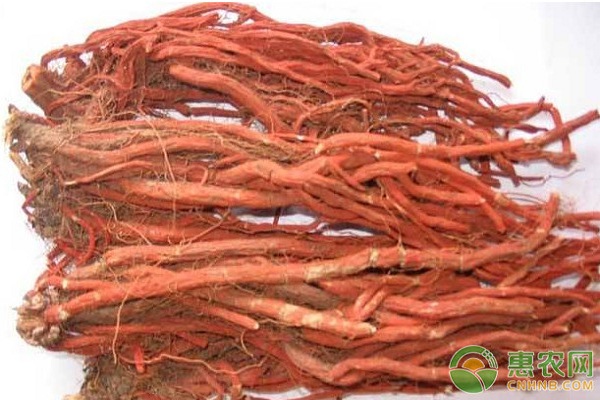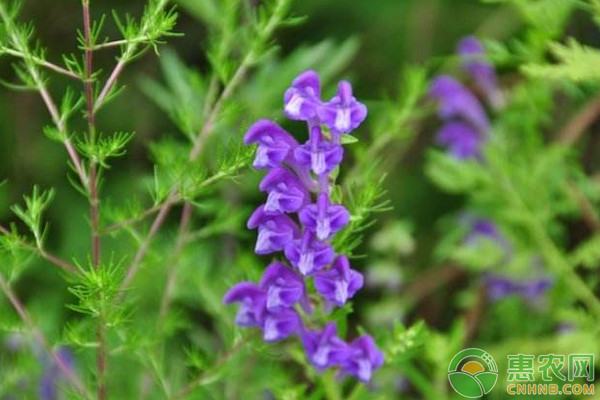In recent years, the prospects for planting in the Danshen market in China have been relatively good, and the situation of shortage of supply has also occurred. In China, the scale and output of Danshen cultivation in Cangxi County has also been expanding, becoming the leading industry for helping the poor. The following summarizes the main points of high-yield cultivation techniques of Salvia miltiorrhiza in Cangxi County as follows:

1 ridge film
Choose neutral soil with convenient topography, convenient irrigation and drainage, deep soil layer and medium fertility. No heavy crops, vegetables or peanuts. In the middle and late January, per mu of fermented farmyard manure 2000kg, superphosphate 30kg, deep turn 40cm, fine and flat, open drainage ditch. Open the car according to 1m, the width of the ridge is 80cm, apply compound fertilizer (15-15-15) 30~35kg on the 40cm wide plane at the center of the ridge bottom, and then ridge according to the ridge height of 30cm (the ridge can not mix the compound fertilizer) Above the bottom of the ridge, so as not to damage the roots), the ridges are 20cm wide and the grooves are 20cm deep, covered by black film.
2 timely planting
2.1 Planting time. Mid-to-late January to the end of February.
2.2 Root selection and processing. The annual roots with a diameter of 5 ~ 10 mm are selected, and the root strips are required to be straight, the color is purple, no damage, no pests and diseases (the germination power of the lignin roots is poor, the yield is low, it is not suitable), and the seed amount is 20 ~ 30 kg. Before planting, the root strips are folded into a root section of about 3 cm, and the head, tail and middle sections are separated (the head and tail of the roots are seedling early, and the middle section is late). The plants are planted in a strong and weak state, planted separately, and sprayed with 50% carbendazim 600 times. Wet roots are disinfected. The roots are best planted with the digging.
2.3 Planting methods. The root propagation method is adopted. 10 cm along each side of the center line of the ridge surface, the planting line is placed, and the hole is drilled at a distance of 20 cm from the nesting line. The depth of the hole is 5-6 cm. After pouring the bottom water for 1 h, it is suitable for the soil. Planting, the root strips are inserted into the holes in the direction (not insertable), and each hole is planted for 1 ~ 2 sections, and the fine soil is tightly covered.
3 Field management
3.1 check seedlings to replenish seedlings When the seedlings are unearthed, the seedlings are checked. When the soil is thickened or the soil is thicker, the seedlings are released in time to promote the emergence of the seedlings. In the absence of the nest, it is evenly diluted, and the seedlings are finished in mid-April.

3.2 cultivating weeding and removing film. During the growth period, weeding and weeding 3 times, the first time was in May, the seedling height was 12 ~ 13 cm, and the second and third times were carried out in June and August respectively. The ridge film was removed at the end of June.
3.3 Fertilizer management. During the growth period, we combine weeding and weeding, and topdressing 2 times. After the emergence of the seedlings, use the clear manure water to raise the seedlings with a small amount of urea. At the end of June and the beginning of July, the acre was used for 1 000 kg of clean water and 10 kg of high-potassium compound fertilizer. Appropriate root dressing: mainly potassium dihydrogen phosphate, zinc, boron, foliar spray. Pay attention to drainage and flood control during the rainy season; if it is dry, it should be watered and drought-resistant in time.
3.4 Cut the hair to the tip. From late April to May, Salvia miltiorrhiza will continue to twitch and flower. In addition to the seeds that remain as seeds, the flower buds must be cut off in stages. After the plants are opened in July and August, the tops of the stem tips can be removed in time to promote nutrient concentration in the roots. .
3.5 Harvest at the right time. The harvesting time was in the first month of January, and the stems and leaves of Salvia miltiorrhiza were withered. First remove the stems and leaves, open a deep ditch at one end of the ridge to expose the ginseng roots, and dig forward the complete root strips along the ridge to prevent the cutting. After excavation, cut off the stem. The excavated salvia is strictly prohibited from washing. If you need a strip of Salvia miltiorrhiza, you can cut the root strips with a diameter of 0.8 cm or more at the root of the roots, arrange them in the same way, expose them to the sun, and make them into small pieces when they are dry, then expose them to dryness, and pack them into strips of Danshen. If not divided into thickness. After drying and removing the miscellaneous, it is called Danshen.
4 pests and diseases green prevention and control
Salvia miltiorrhiza is mainly caused by four major diseases: root rot, root knot nematode, leaf blight and sclerotinia; the main pests are aphids, silverworm, cotton bollworm and cockroach. Adopt green prevention and control technology to effectively prevent and cure Danshen pests and diseases.
Agricultural control: rational rotation, no heavy cropping; strengthen quarantine, not picking seeds from infected areas; strengthen fertilizer and water management, cultivate strong seedlings; timely cultivating, artificial weeding. Physical control: placement of traps and frequency vibration lamps. Chemical control: select high-efficiency, low-toxic and low-residue pesticides; strengthen pest and disease monitoring, optimize pesticide formulations, safely, accurately and alternately use pesticides, reduce the number and quantity of pesticides used; prohibit the use of pesticides during safe intervals.
4.1 Diseases.
1 rot: easy to develop in hot and rainy seasons. The roots of the damaged plants are black and rotten, and the stems and leaves are withered and died. In the early stage of the disease, the roots were treated with 70% atropine suspension 1 000 times.
Two knot nematode diseases: Root knot nematodes parasitize the roots to form large and small nodules, which seriously affect plant growth and quality. Spread by roots and soil. In the early stage of the disease, 5% avermectin microcapsule suspension was used to control the roots.
3 Leaf blight: brown round small spots on the leaf surface at the beginning of the disease, the lesions are continuously enlarged to be taupe, the leaves are scorched, and the plants die, which seriously affects the yield of Salvia miltiorrhiza. In the early stage of the disease, it was controlled by a 70% solution of a 70% solution of suspending agent.
4 Sclerotinia: Infecting the base of the stem, the head of the bud and the root and neck. The affected part becomes brown and rot. There are rat fecal sclerotia and white mycelium, the stems and leaves are yellow, and the plants die. In the early stage of the disease, the roots were treated with 50% keining 1000 times liquid.

4.2 Pests.
1 Locust: Take the nymph and suck the stem and leaf juice. Spray with 30,000 times solution of 70% imidacloprid water-dispersible granules.
2 Silver Sp1: The larvae bite the leaves and spray with 90% trichlorfon 800 times at their young age.
3 Helicoverpa armigera: larvae harm buds, flowers, and fruits, affecting seed yield. At the beginning of the bud stage, it was controlled with 5% avermectin microcapsule suspension 2 500 times solution.
4蛴螬: The larvae bite off the seedlings or feed on the roots, causing lack of seedlings or roots. The field occurrence period is watered with 90% trichlorfon 1 000 times solution or 75% phoxim emulsifiable concentrate 700 times solution.
The above is the main point of high-yield cultivation techniques of Salvia miltiorrhiza. Welcome to the farmers' friends to come to Huinong.com to learn more!
Colostomy Bag,Bowel Bag,Colostomy Pouch,Colon Bags
Wenzhou Celecare Medical Instruments Co.,Ltd , https://www.wzcelecare.com